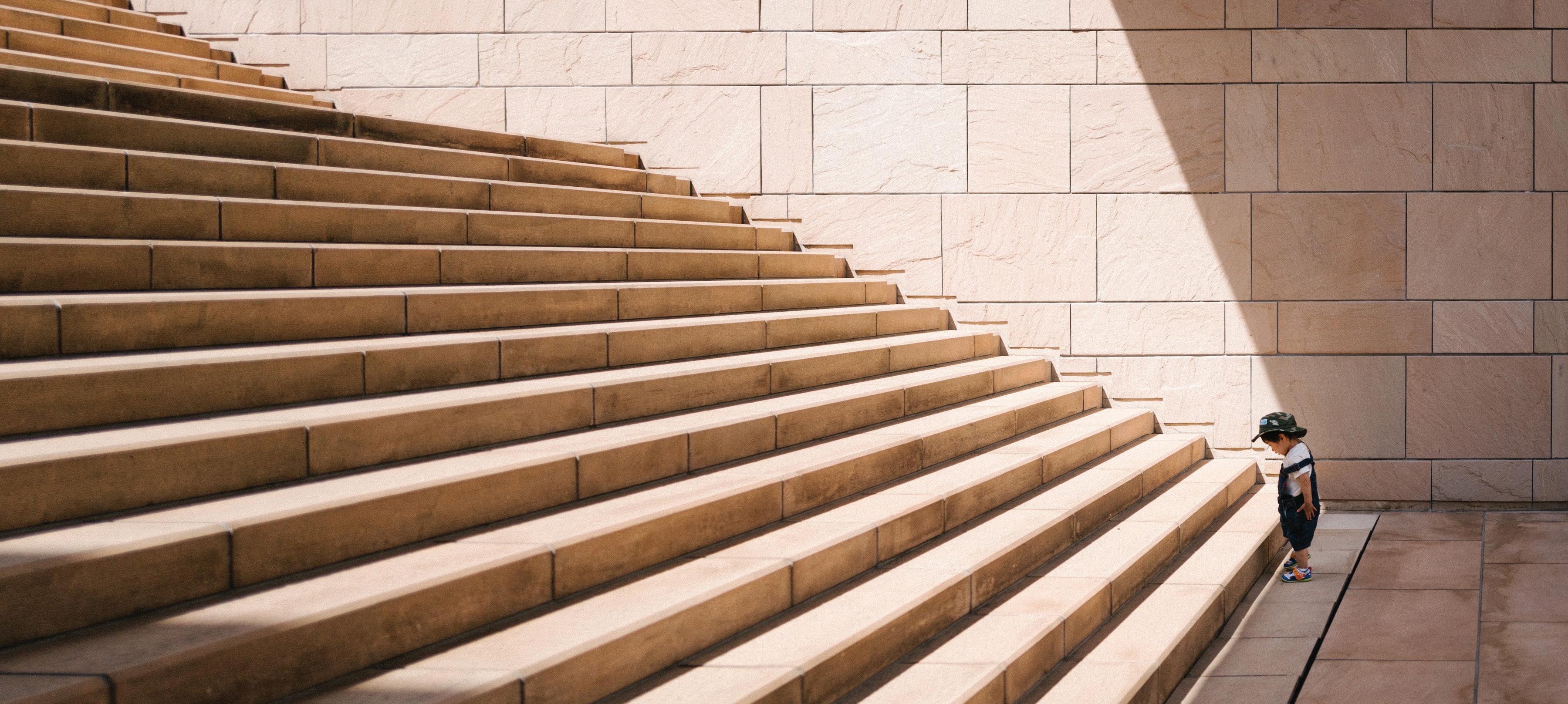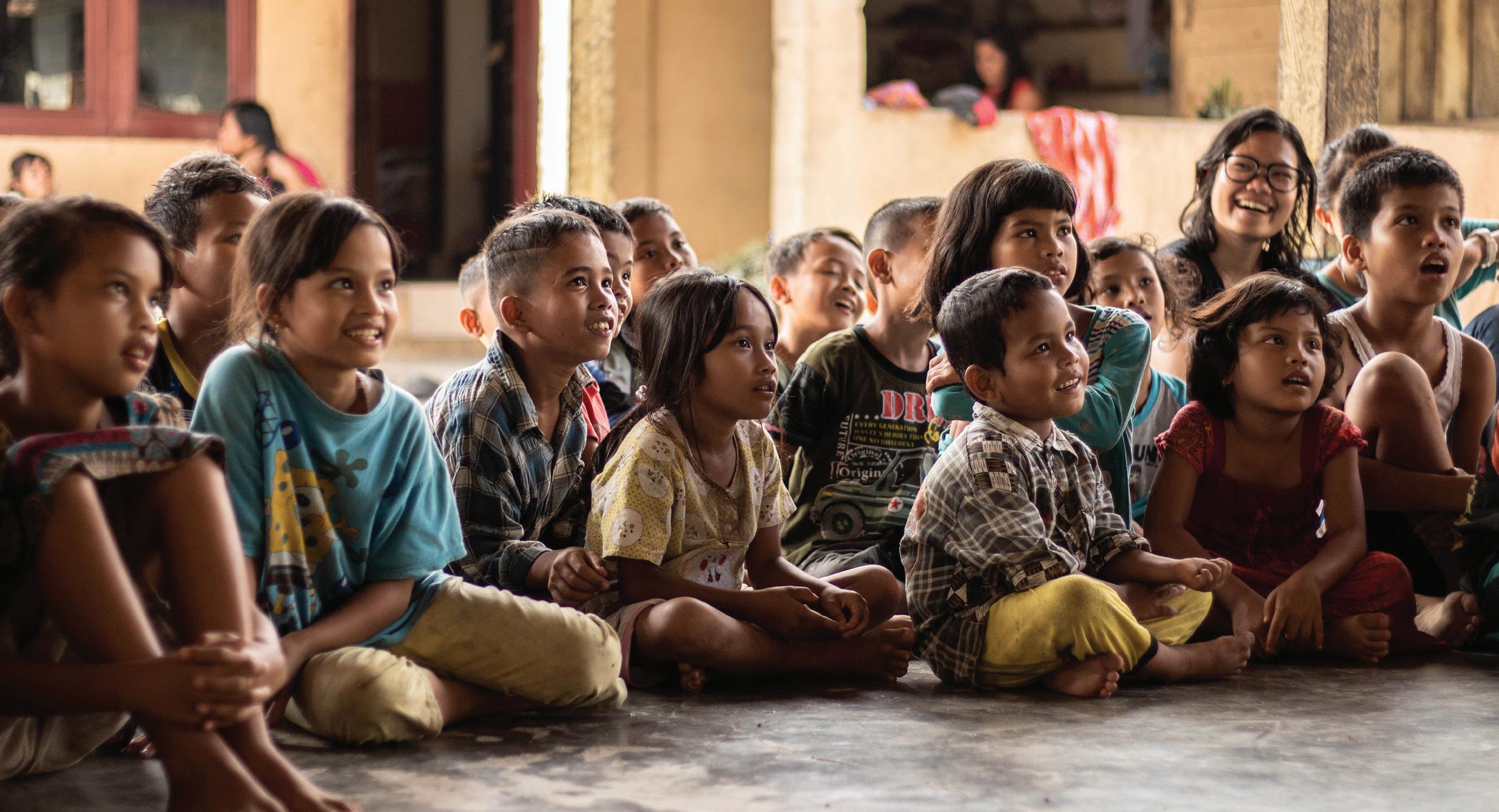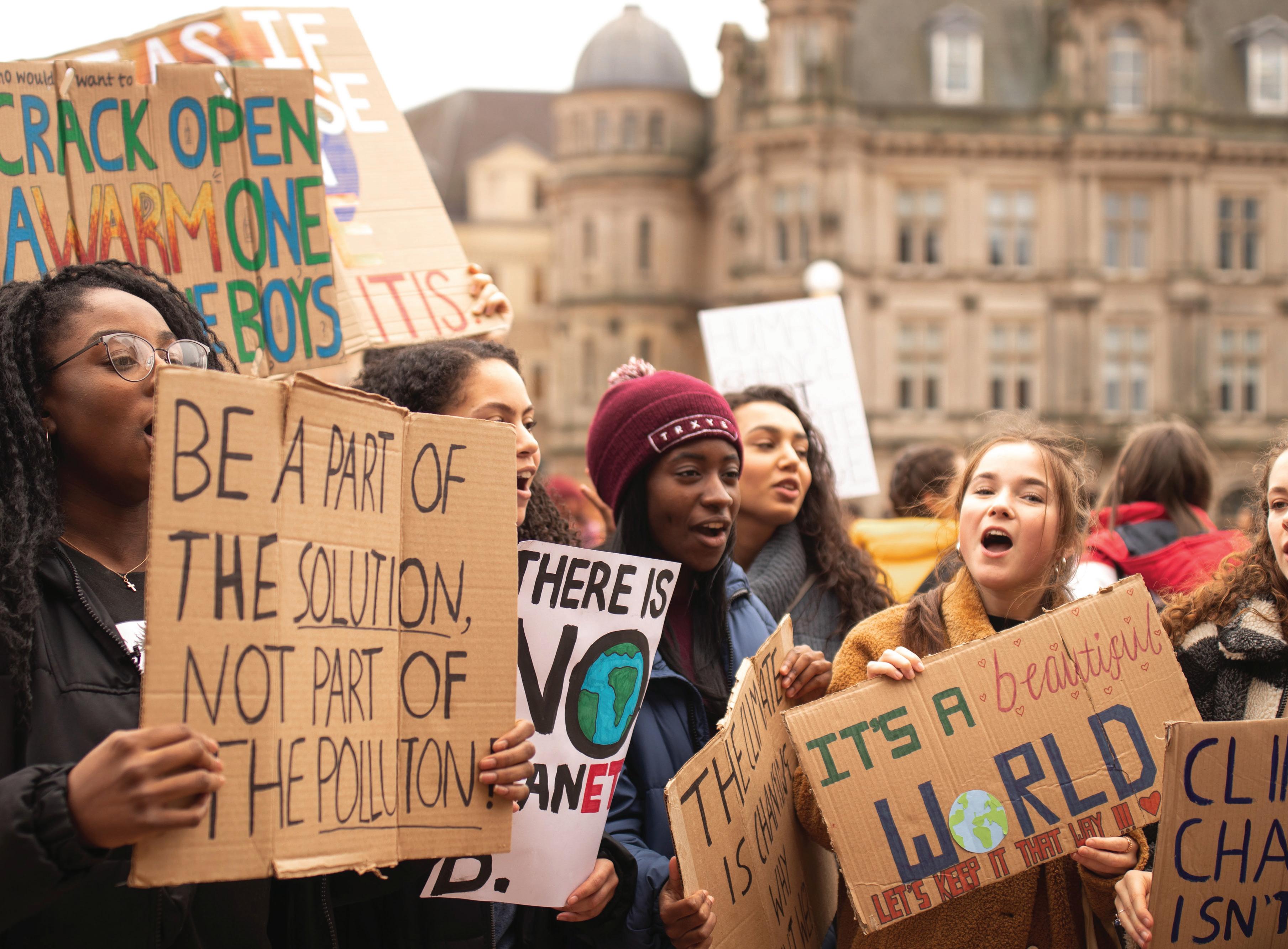
29 minute read
Katryna Starks Ph.D
GAMES PEOPLE PLAY:
FARM SIMS FOR THE FUTURE
By Katryna Starks Ph.D.
AS we look around our world, it’s easy to see that there is much that needs to be done in order to move into a healthy, sustainable future – or even a future at all. Our air and water is polluted, our crops have lost nutrients due to corporate farming practices, our energy sources are taxed and in danger of depletion, and our inhumane treatment of animals and people in the name of food and profit are producing results that threaten our very existence. These issues require complex, multi-pronged solutions that can be enacted quickly on a worldwide scale. While policy makers can, and do, meet in world summits to explore the best solutions, there is a rogue factor that is difficult to control. That rogue factor is us. Social ills require social solutions – which requires re-training thoughts, attitudes and behaviors on an international scale, using method that people will wholeheartedly participate in. Video games offer unique opportunities to help people not only imagine and

navigate through these proposed solutions, but to gain enactive experience by virtually building them.
One popular video game genre that creates a medium for teaching sustainability practices is the Farm Simulator (called Farm Sim). The staples of the Farm Sim genre are planting and tending crops, raising poultry and livestock, crafting tools and farm-related architecture, and mining for gems and collectibles. The social component in Farm Sims generally involves giving gifts and performing simple favors for the townspeople in order to grow friendships, and possibly romance.
While all of these activities can promote ideas about sustainable practices, two games directly address it:
Women in Science (Luana Games, 2020)
Women in Science starts the player on a piece of land that they can farm, but there is a catch. The land is filled with trash and has to be cleaned up. The player picks up errant chip bags, old newspapers, and discarded water bottles that have been thrown around the property. In return, the player gets clean land to farm as well as raw materials to craft with. The trash was more than just trash – it gets recycled.
Recycling is a major theme in Women in Science. Buildings in the game have recycle bins outside, and the player can gain materials by searching through them. These materials can be used to create helpful technology, such as hydroponic and aquaponic setups to make farming more efficient, and even a drone that will water the players fields of crops.
Then, there is the game title and how it is implemented. The townspeople are not random characters. They represent notable science and education figures in the real world – many of whom are women. The game includes Heddy Lamarr, Temple Grandin, Maria Montessori, and Wangari Maathai as well as Jonas Salk and Albert Einstein. The player is tasked with helping these characters, but the quests involve helping them with concepts they became famous for. For instance, delivering eggs to Jonas Salk so he can work on his vaccine. In Women in Science, players can work with the brightest minds in history to help build a better world. game where picking up trach and recycling are a side activity, in No Place Like Home, cleaning up trash and recycling it is the main activity in the game. The player wears an enormous vacuum cleaner that she uses to tackle a world filled with trash. The trash heaps include recyclable material used for crafting helpful machines and buildings for cooking and storing, as well as seed packets to grow a wide variety of crops.
All major quests in the game involve cleaning or healing the land. One quest involves dismantling fox traps and repairing a fox den so the foxes can live freely. Another involves chopping contaminated trees and growing new ones. Others include cleaning mounds of pollution and recovering a water filter to clean the river. The final quest involves finding the source of all of the pollution and repairing it for good.
These games provide an enjoyable activity that provokes thought – and hopefully discussion and action – about how we get our food, what we do with our trash, and how we can take responsibility for maintaining the world we live in.
No Place Like Home (Chicken Launcher / Realm Distribution, 2020)
While Women in Science is a farming Katryna Sparks is an Instructional Designer and Research Fellow at The Futures Forum, USA

PROGNOSIS

CONVERSATIONS ON THE FUTURE WE WANT… UN AGENDA 2030
With Pamela Coke Hamilton & Kate Brown
By Claire A. Nelson
AS we close out 2021, we find a lot of talk about whether or not the SDGs are still relevant. Whether or not COVID has delayed the possibilities or amplified the needs, we argue that both realities are true, and that we should persist as if on the road to the successful accomplishment of these goals is smooth and direct because our ‘thrival’ if not our ‘survival’ depends on us making the journey by any means possible.
The UN’s Sustainable Development Goals (SDGs) were adopted in 2015 as the universal call to action to end poverty and hunger, protect the planet and ensure inclusion, peace and prosperity for all by 2030. However, without active individual involvement, Agenda 2030 cannot deliver wide scale impact. Understanding of the SDGs and actions towards achieving them should be integrated in the everyday lives of ordinary people. We need ways to reach people in ways that speak to them and offer content in a form that allows them to engage. We are talking about 17 Sustainable Development Goals, 169 targets, and assuring human thriving, not just survival in a shared future by 2030. These goals range from ending poverty, ending hunger, to gender, inclusion, climate action, justice – really an overarching complex of all the things that we as humanity need to do. And we know that these are really not seventeen separate goals. They are all cross cutting. There are no hard boundaries or borders. Of the many challenges that have made the airwaves in the latter half of the year, two issues that are top of mind for me are: the challenge facing the global supply chain; and the challenge of climate change, as evidenced by the angst of COP-26. In this issue, I hold conversations with two women leaders working on these matters at the global level. Pamela Coke Hamilton is a leader in the UN system, and Kate Brown is a leader in the NGO sector developing public-private partnerships in and by islands.
… with PAMELA COKE HAMILTON
In this first conversation, we hear from Pamela Coke-Hamilton, Executive Director of the International Trade Center, in Geneva. We will focus on the relevance of trade rules and regulations and the trade ecosystem to achieving global sustainability.
NELSON: At present, there are a lot of disruptions in that sector in the face of COVID-19. Do you think the face of the shock of the COVID pandemic globally, that the current goals are still relevant, or when we have to tweak them in some way?
COKE HAMILTON: The SDGs have never been as relevant as they are today. When they were launched in 2015, they were seen as ambitious signposts to lead us along the path of sustainable development. Today, they are no longer just ambitious or aspirational; they are essential. Let’s not forget that this compact for development is a shared one: developed countries, developing economies, the private sector and civil society have all adopted the SDGs as indicators to measure progress. Countries and companies have incorporated them into their balance sheets and strategic planning as tools to prioritize and to deliver.
But the COVID pandemic presented us with some home truths. That as a global community we are truly interrelated and what affects one affects all; that we are interdependent and the only way to face a global threat is together; and that we must therefore now be even more intentional in how we use the spirit, advocacy and guidance of the SDGs to rebuild and repurpose.
The SDGs are not perfect. There is a discretionary gap between aspiration and implementation that may be too wide, and the accountability frameworks still require some tightening, but when you see what is happening today as a result of the pandemic – the widening gender parity gap; the increase in levels of childhood hunger and malnutrition; and loss of decent jobs – there remains no better globally agreed lodestar than the SDGs to point us in the right direction.

NELSON: As an engineer, I have always believed that engineers should be considered as part of the vanguard of the construction of the future, given our role in creating the built environment. Yet, that voice is often not present as leaders in the policy spaces that are driving the conversations about the SDGs. How does the voice of trade policy experts show up in the conversation about global sustainability?
COKE HAMILTON: Well, you would be surprised how many development and policy experts started life as engineers! But I imagine what you are asking is why should trade policy be part of the global sustainability debate?
It should be and it must be given that smart trade policy does hold the key to addressing some of the environmental issues on the table today. How we produce, how we consume and how we trade will impact levels of greenhouse gas emissions and hence climate change. There is no need to deny that. Physical goods have to be transported from point A to point B; even in the virtual world there is a growing carbon footprint in areas such as bitcoin.
That is why trade policymakers need to be at the table to be part of the solution to ensure that trade and trade regulations facilitate the sharing of innovative green technology; support sustainable agriculture; call for the development and use of more energy efficient fuels; and support the removal of regional barriers to trade to allow countries in Africa, South-East Asia and Latin America and the Caribbean to be able to trade more efficiently with each other. One recent example is the ongoing discussions at the WTO – traditionally focused on trade negotiations – on plastics pollution; or on the impact of natural disasters on small islands; or on trade and climate change. By bringing these two worlds together you increase the chances of the trade community working for sustainability: I see it as a win-win.
NELSON: The business of trade is integral to all life and livelihoods given that much of what most humans on the planet use, is made somewhere else and exported or imported from one place to another. From the pipes that carry our water to the wires that transmit power to the medicines and masks that keep us healthy. Thus trade is critical to our lives. How do we ensure that those working at the nexus of the policy and political spaces in the service of creating sustainable trade systems and futures have the capacity to use foresight as a design tool in planning for the future?
COKE-HAMILTON: Foresight is often only as effective as the data being used to support that foresight. It may not be the most exciting response to this quite philosophical question but it’s a practical truth. Modelling, predicting and strategic recommendations must be based on the data and the evidence. At ITC, this is why we invest so much in global public goods and in various tools like SheTrades, Outlook, which can help trade and environmental policymakers lead with evidence-based data and analysis. Foresight without data is guesswork.
We must invest in data and data collection. We must help developing countries and committees better understand the paths to success. But another important component of building the collective intelligence central to strategic foresight is supporting interdisciplinary brainstorming. By bringing not just trade and environmental policy experts together but by also harnessing the knowledge of civil society, women’s business organisations, indigenous people, youth, at risk and marginalized communities, you provide space for inclusive and representational strategic foresight. This is what ITC does through its public-private partnership discussions, and I believe that the WFSF itself has an important role to play here in placing a spotlight on those who have a stake but don’t always have a voice on issues to do with trade policy, sustainability and the future of our planet.
NELSON: Transportation systems necessary for trade are big polluters; how do you see your institution supporting the SDG 13 Climate Change?
COKE-HAMILTON: Indeed, from an environmental footprint perspective, trade has been seen as part of the problem. Global trade contributes to natural resource use, pollution, and biodiversity loss. In fact, the emissions associated with the production and distribution of traded goods amount
to 25% of total global emissions. At the same time, trade also builds a key part of to the solution to climate and environmental challenges. It enables access to environmental goods and technologies, such as solar panels, it drives green business practices by enabling companies to access sustainable markets, and it stimulates and spreads innovation.
My participation in COP COP26 this year has a profound effect on me, because trade and small businesses were largely on the margins of the discourse. But small producers in developing countries are central to solving climate related challenges. They play a vital role in production of goods and services, but even more so because they offer 50% of jobs worldwide, constituting the social and economic fabric of the world’s economies. Putting MSMEs at the heart of the trade and environment agendas can contribute to better managing and reducing the effects of climate change and sprouting the new ideas and innovations that are necessary to meet the planetary crises.
ITC supports small producers by helping them gain a competitive advantage by going green. We are working with them to adapt to the changing climate, adopt more circular and sustainable production processes and pursue nature positive models. Examples range from modern irrigation systems, to certified agricultural goods, to environmental advisory services. The changes they are making are leading to annual savings of water, energy, resources and lowering of carbon emissions. ITC is also working with the stakeholders around them: with policy makers and actors in the business ecosystem to ensure that the needs and priorities of developing countries are reflected in the evolution of the trade and environmental agendas. We work with international buyers to ensure that small producers can comply with emerging requirements in their supply chains all of this to deliver the action needed to tackle one of the biggest crises of our time.

NELSON: When you think about success in the year 2030, what do you see for then? What is your headline of choice, and how do you see us getting to that headline?
COKE-HAMILTON: I know what I would love to see. That no child goes to sleep hungry. That access to food is a human right. That access to safety – including environmental safety – is a human right. Progress in bridging the equality gap, both in economic terms and from a rights-based perspective, has been rolled back as a result of the pandemic.
We know this. We also know what needs to be done. Will we achieve all the SDG targets by 2030? Realistically I am not certain that we will. But will we be on the right track? I believe so. Again, it is about bridging that gap between aspiration and implementation. As for a headline: how about I borrow from my country man the late great Bob Marley: “Lively up Yourself”. Which in real speak essentially means equip yourself and commit yourself to action.
NELSON: What and where next does the ITC take the journey to Agenda 2030?
COKE-HAMILTON: As part of the United Nations, Agenda 2030 remains our compass. Our recently completed Strategic Plan 2022-25 reaffirms that we will strive to support countries meet and exceed these goals in 2030 and beyond. And where success may not have been achieved by then, we recommit to doubling down to ensure we reach that finish line. We commit to ‘lively up’ ourselves.
NELSON: That adage from Bob Marley is a good place for us to leave off. Thank you Pamela Coke-Hamilton for taking the time to share your thoughts.
… with KATE BROWN
In this second conversation, we hear from Kate Brown, Executive Director of Global Islands Partnership (GLISPA) an NGO based in New Zealand. We will focus on the issue of climate change.
NELSON: I want to begin by explaining exactly what is the Global Island Partnership? Which islands make up your group?
BROWN: GLISPA was founded in 20052006 by two Island leaders, the Presidents of Seychelles and Palau. They wanted a partnership that was focused not just on small island developing states, but something that was working with all islands regardless of political status.
That includes American islands, European islands, etc. as places that face similar challenges.
There are a lot of cultural differences. There are economic differences between islands. Even in the grouping of small island developing states (SIDS) there’s huge diversity. Yet these days we see a huge proliferation of efforts that are kind of threading the needle between a wide diversity of island entities. We at GLISPA work with a range of island jurisdictions including Hawaii, the British Virgin Islands, independent countries that are islands - it’s very diverse.
NELSON: That’s really wise because, we’ve tended to divide our planet into different segments, politically, language, geographically, but as islands are at the forefront of the climate change challenges, it is imperative that we have a global exchange among islands of the world. So let’ ask the question topmost in my mind. The future of the SDGs as you see it in the aftershock of the COVID pandemic. I read somewhere somebody said, that the global goals could not be achieved around the 2080’s. Given all that has happened since COVID, do you think that the SDGs as written are still relevant?
BROWN: I think the SDGs are absolutely still relevant. We still need to end poverty. We still need to reduce inequality. We still need to address climate change. All of those seventeen goals. I think we may have to and can tweak the goals. However, the real key now is how we localize them. How is local action actually going to happen? The targets were set by the UN New York with all member states of the United Nations, but the implementation is happening locally. If we’re looking at islands, implementation is happening in each individual island. and they have to figure out for themselves what are the goals that they will focus most on within the broader context of the 17 SDGs? And what are the measures that they are going to hold themselves accountable for that are relevant to their local communities? You can have the most perfect global policy document in the world. But the real challenge is how you move to implementation. It’s not just about finances, although for many islands and small island developing states in particular, the finance question is a challenge. It is also about capacity. It’s about leadership.
Political leadership is critical to making these things happen. There are some islands that are leading on how you address some of these issues. And then, there are some islands that are being left behind, and COVID has really exacerbated that problem. It’s made it worse. We see the impacts of the massive drop in tourism and exports especially fisheries


resources coming into islands at the same time, which is creating all sorts of issues. Yet, we also see some examples of amazing self-resilience and reliance that we need to build on.
We know this pandemic is going to go on for another couple of years. We’re not out of it yet – and we have been told that we’re in line to have one of these at least every 10 years. So I’m not really confident that we’re going to address this quickly. But there’s so much misinformation and just a clear lack of understanding not just of the global goals, but also of COVID. And we have to use this as a learning opportunity to get the wheels of our vehicles moving in the same direction. At the moment they’re all over the place think we’ve got like four wheels going in different directions.
Speaking specifically about New Zealand, there’s a lot of fear about agenda 2030 as if the UN is coming to take something away from people, coming to control the dairy farms of New Zealand. There is a lot of misinformation. So, we need to do a better job of ensuring things are owned in communities, that there is a bottomup approach for local goal setting that interacts intersects and comes to the SDGs, not the other way around.
NELSON: As an engineer I’ve always been very concerned about islands and island policymaking about the lack of a voice for engineers in this process given their role in transportation, energy, water and wastewater, or solid waste management e,g. Are you seeing the engineering community in the islands coalesce around the SDG agenda? Or is this something that we could see some improvement around?
BROWN: I think it’s happening to some extent. It is important that all sectors are given a voice to share their concerns or their input. About two years ago we launched a new initiative with Hawaii Green Growth local 2030 hub called the Local 2030 islands network. Everyone that wanted to be part of the discussion around developing, Hawaii’s goals, e.g.for water, food, energy, transportation, were at the table, and that included the engineers.
This is an ongoing process and facility that’s decided, not by the government but by a public-private partnership that connects the government, the community stakeholders, and the private sector because it’s not just engineers that are often out of the loop, quite often the private sector is also out of these SDG discussions.
Hawaii has been having these conversations for 10 years -- bringing together all of the stakeholders, developing goals from the bottom up which include the views of engineers, the local farmers, the local communities that are impacted, everyone- to agree on what some of those goals might be and how they’ll be measured. This gives us the ability to track what progress is being made and to post corrections as we go. Hawaii has a very powerful model which is now being done in Guam. And in the GLISPA Local 2030 islands network what we’re really trying to do is help all islands go through this process. It is a process that makes sure that everyone’s engaged in the solutions and in the goal setting that happens. We believe that unless you do that, we’re not going to implement any of Agenda 2030 projects well. It will take the engineers and communications people and having all sorts of people around the table to enable us to see solutions that we might otherwise not see and to get to the innovations we need to move to implementation.
In the case of Hawaii, the food security goals took four years of process facilitation to get to agreement because we needed agreement from the
agriculture community, the conservation community, the people in tourism, and all the different people coming together and agreeing on what the goals were together. But now we have an agreed-on approach of one strategy, rather than having a strategy on conservation, one on agriculture, another strategy on water, and so on, all competing with each other with different goals and markers and thus not being able to be efficiently and effectively implemented.
NELSON: I want to believe that Hawaii’s expertise in future studies lay the groundwork for this success. The Future Studies program in Hawaii was run by someone that people in the futures community consider as a father of the movement -- Jim Dator. And as we think about this, before I turn to the issue of climate I want to address a question about the future. When I talk about smart futures? The M in SMART in the SMART Futures Framework is about meaningful metrics. I’ve been thinking about the need for a new metric that’s more beneficial to islands than the GDP or GNP which are tired, long-dead metrics. Are you seeing any movement towards new ideas about measuring the future we want? Meaning measures like gross national happiness or well-being? How is that conversation emerging across the islands GLISPA is working with?
BROWN: We have seen some progress here in New Zealand which has a wellbeing metric. In fact, the underpinning of the budget discussion is about wellbeing. Vanuatu has also tried to develop a different national measure.
When we started working with Hawaii about eight or nine years ago when they were trying to develop their green growth initiative and when the idea of islands sustainability came up they asked us, ‘What is the measure of islands sustainability?’ And we said to them ‘What do you think it is?’ Local 2030 is very focused on the creation of measures that are connected the SDGs, but it’s a bottom-up approach. So Hawaii Green Growth has all sorts of things in their goals -- including the type of Hawaii that people want to live in; the types of jobs that people need; the education


that needs to happen to get the types of jobs to enable this kind of green Hawaii. There’s no point coming up with goals if you don’t measure them and you’re not accountable both to the people that you work with, but also to the people on the island for achieving them. I think what’s happened in Hawaii, and also what’s happening in Guam which also has advanced in designing a dashboard. The Marshall Islands and FSM or the Federated States of Micronesia are also going through this process. And for them, it’s a little bit more complicated because they have a lot of international agreements that they’re part of, especially with reference to climate. So, goal setting is partly a coherence building harmonization process.
We have just been lucky enough to get support from the US government to tap into the technical support of US agencies in an island to island peer approach -- learning from the way that GLISPA and Local 2030 works – where islands are seen as leaders on many of these things, and not as incapable. We want to see how we can enable Island peers to encourage each other and to share with each other how to do some of these things. And we actually have examples of islands doing it.
NELSON: A side question. Lets say, a community wanted to do something but politically they couldn’t get the whole island to move. Have you had experiences where you use a sub-national approach to pilot a dashboard just to get them exposed to this idea of thinking about what’s the future they want to live in? Has that happened at all?
BROWN: Well, we operate with the idea of island economies, not of island states or island territories. So its islands as economies and that can be at all different scales. Probably the furthest along with this is actually an island in Hawaii because you know, Hawaii is actually five main islands. There’s an island called the Big Island which is the island of Hawaii that is trying to do that at its own island level, not at the whole of the state of Hawaii level. The first thing the new mayor did when he came in was run a two or three-day Hawaii Island sustainability conference. This effort enabled them to address the questions ‘How do I own this?’ ‘What does this look like on my local Island?’ Not from the level of the Governor but at the sub-national at the sub-state Mayor level because that’s where lots of this stuff needs to happen. So we are seeing the effort to develop their local goals that are more locally relevant.
NELSON: Some have said COP-26 was just a PR gimmick. But GLISPA is among the NGOs working to ensure these global confabs advance the change agenda. Has GLISPS been able to strengthen the voices of islands because you’re working with islands globally – from SIDS to islands in Europe and the USA and Canada? Do you see us being able to forge new kinds of partnership that can accelerate past the hesitation that
is stymieing investment in research and development of innovations that can address the zero carbon agenda and get us off our fatty oil diet.
BROWN: To be honest I also am frustrated at the lack of speed of things. But to the question ‘Do the UN Member States coming together achieve anything?’ My answer is ‘Yes, it does’. Because if we didn’t have these places of dialogue, and in some senses, the political accountability to each other, I think we’d be in a much worse place than we are now. The dialogue is really critical. Yes, I would like to accelerate action. There are so many things I’m frustrated about. But the playing field is very uneven. In our (Maori) culture, we are focused on being good ancestors. So as that person, I am deeply worried about the future and try very hard to be part of the solution. So looking at the issue of partnerships, I think that via local 2030 where we’re looking at Island economies and subnational islands who can influence their whole nation to change. That’s what we’re seeing very much with Hawaii with Guam with the US islands at the moment or even Ireland which is not a subnational island but as part of this network is trying also to look for the solutions we start bringing all of these people together I think that we can actually be quite transformative in the way that convening things like the Climate and Clean Air Coalition has done.
So we start to move not just be focused on the climate space, but on the whole island space and in a way that can transform the way that others think about these things. Another network that we support which is the climate strong islands network has just developed. This network of US Islands includes various sub-national islands, for example, islands off Maine, or islands off Alaska, Hawaii or Puerto Rico, that have come together around the idea that the island’s situation is different than the mainland, that they need different solutions. Global transformation is needed, and people aren’t helpless nor hopeless. The funding that we have from the US government is very much in the climate resilience space because it’s that idea of building this type of resilience and its connection to sustainable development. My question always with these things is about the sum of the parts adding up to a whole. advance goals. One of our biggest challenges is how we enable people to work together in a way that actually advances things. That’s a challenge for the climate Change community as well. But we can look to the future and look at what techniques are available now to do some kind of decisions and network analysis or a bit of data crunching on who is doing what. I do think we have enough software and universities that can create partnerships to keep track of these kinds of challenges.
NELSON: We have creative decision support and mapping exercises that can help us to rationalize our resources. What is the risk of not acting? Because I’m wondering if we’re doing a good enough job of asking questions about what will happen in the future. e.g. When 500,000 people have to migrate, who is going to take these people? Are we doing a good enough job of painting the worst-case scenarios?
BROWN: I feel like the military is very onto that issue. But I don’t think stopping large refugee populations has ever been a motivating factor. I mean, there are large refugee populations now without climate challenges, living in areas all over the world, and particularly in some very unstable places, there’s famine. There are all sorts of things going on. We don’t seem to take that all that seriously. I’m really not convinced that will be for enough to motivate most countries to change what they’re doing.
NELSON: So basically, it is better to use the carrot approach as there’s no stick to paint a goodwill Agenda for the Future. So let us say we are creating an island futures movement for Agenda 2030. As we close out, I like to leave an optimistic note. So, when you think about success for Agenda 2030 – imagine we are at the UN SDG review 2030 in New York, What is your headline of choice? We’re here at the GLISPA Futures Summit. What successes are we talking about?
BROWN: In 2030, we see 40 Island economies, and I don’t mean islands, but Island economies, that have been able to report on improvements on addressing the goals that they set for themselves on the SDGs. I know that’s a difficult headline. So, we’d need to restate it more clearly but what I am saying is that we would have gotten to the point where you’re starting to tip the normalization, because it is at the point where it’s interesting and people think it is really cool. We need a network analysis for what we’re doing as a network of networks is starting a community attractor on networks and partnerships, and how you track progress, and how we do better at working together. That is why I believe in the possibility of our success.
NELSON: Thank you Kate Brown for signalling positive changes for and from the islands we love.










